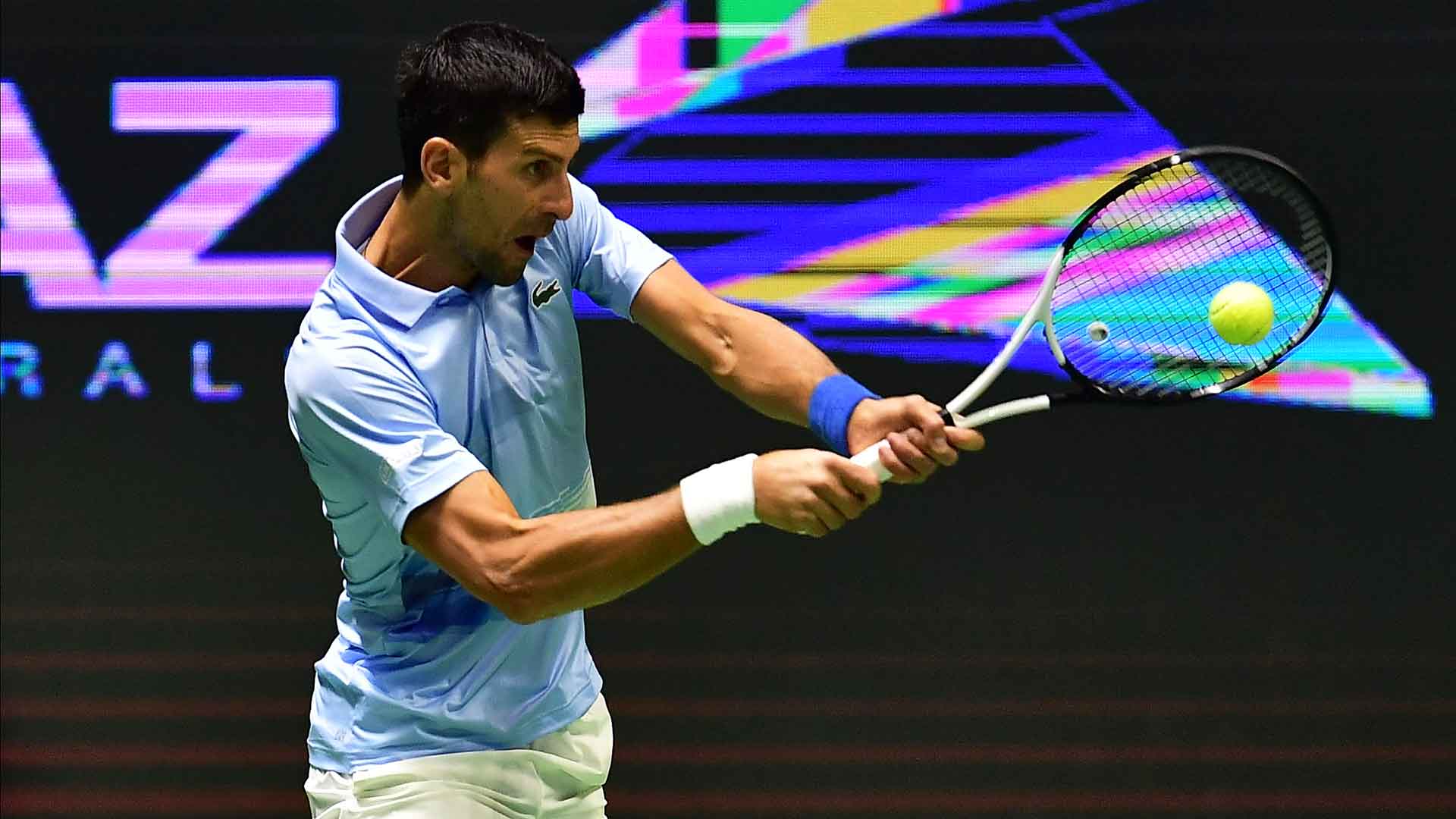After breezing by Stefanos Tsitsipas 6-3, 6-4 to capture his second straight tournament, Novak Djokovic has now won 90 ATP Tour titles. But how? Clearly Djokovic knows something about the sport of tennis that everyone else does not.
Tsitsipas has a one-handed backhand, and it would seem that this could be a detriment on certain surfaces where a player doesn’t have time to create their preferred backswing. Surely hammering the Greek’s backhand would be the strategy of choice to win this championship match, yes? No.
For years, Djokovic has employed the use of analytics. The Serbian has been at the forefront of data usage well before his counterparts. For three years he received match analysis from Craig O’Shannessy of Brain Game Tennis, which has been well-documented. He now uses the tennis analytics firm Gotta Tennis from co-founders Gordon Uehling and Brett Hobden.
Djokovic really opened the portal into his mind in a now-viral video clip from this year’s Laver Cup which shows him coaching Andy Murray. He gently but passionately explained that opponent Alex de Minaur was serving “highest percentage, both sides, to your forehand”– among other tactical golden nuggets.
His mind is like a file box, and at the Astana Open ATP 500, he had done his homework. Djokovic knew the proper tactics to employ.
On Twitter, fans implored Djokovic to send balls to the Tsitsipas backhand, one writing “Stop going to his FH and pepper his BH you egotistic Serb.”
That tweet didn’t age well. Here’s why. Let’s examine at the two Djokovic breaks of serve against Tsitsipas and how he earned them.
In the first set, the score was 3 games to 4, in favor of Djokovic, and Tsitsipas was looking to even it up. The first point of this game was a long rally. Djokovic equally hit to the Tsitsipas forehand and backhand– exactly 6 shots to each wing. The point ended when Novak hit a drop shot for a winner.
The next point, on 0-15, Tsitsipas made a forehand error on the 4th shot of the rally.
After winning a point, Tsitsipas committed yet another forehand error after Djokovic sent two shots to that wing and none to the backhand.
On 15-40, Tsitsipas hit one backhand and two forehands, on the last of which he committed yet another error.
So the total tally on the points Djokovic won? 11 to the Stefanos forehand, 8 to his backhand. Three forehand errors, zero backhand errors. Break to Djokovic.
The service break in set 2 was even less complicated. In a series of extremely short rallies, Tsitsipas committed two forehand groundstroke errors, one forehand volley error and one backhand volley error. Zero backhand groundstroke errors.
The little secret about the Tsitsipas backhand is this: Everyone peppers it. He hits it so much, it’s become a well-practiced, rapidly improving and reliable stroke. He’s also been developing his slice more to add variety. Tsitsipas made the finals of this tournament. He’s an excellent player.
Djokovic’s advance scouting probably told him that the way to get to Stefanos was to condition his backhand, then draw errors from the forehand, like Pavlov’s dog. And that’s exactly what happened on the way to yet another ATP title for the 21-time Grand Slam champion.















